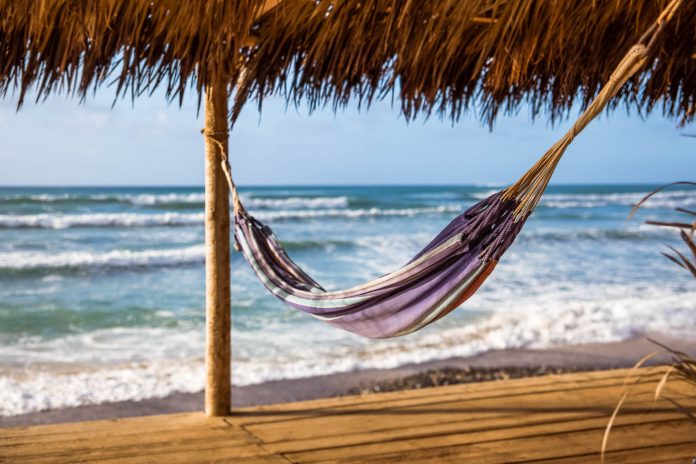Boa Vista, die östlichste Insel der Kap Verden, ist eine faszinierende Symphonie aus gleißenden Sanddünen, trockenen Geröllwüsten, verschlafenen Ortschaften und den schönsten und größten Stränden der Inselgruppe.
Boa Vista ist die drittgrößte Insel der Kap Verden und liegt ganz im Osten der Inselgruppe im Atlantik etwa 455km vor der afrikanischen Küste. Hier treffen sich Wüste und Atlantik, denn Boa Vista besteht zum Großteil aus Wanderdünen, die der Wind aus der Sahara bringt, schroffem Geröll, weitläufigen Stränden und kleinen Oasen mit struppigen Dattelpalmen.
Inhaltsverzeichnis
BILDER: Top Shots von Boa Vista, Kap Verde
Fotogalerie: Boa Vista – Top Shots
Boa Vista machte ihrem Namen „Schöne Aussicht“ alle Ehre. Vom Massentourismus noch verschont geblieben geht es auf Boa Vista ursprünglich und gemütlich zu. Doch mittlerweile gibt es auch auf Boa Vista einen Flughafen und die ersten Hotels ragen bereits in den Himmel über dem Atlantik.
Tipp: Als günstige Alternative zu Mietautos bieten Autovermieter auf Boa Vista Ausflugsfahrten für ein bis zwei Personen an. Um die gesamte Insel zu erkunden, sollte man zwei Tage veranschlagen.
Hauptstadt Sal Rei
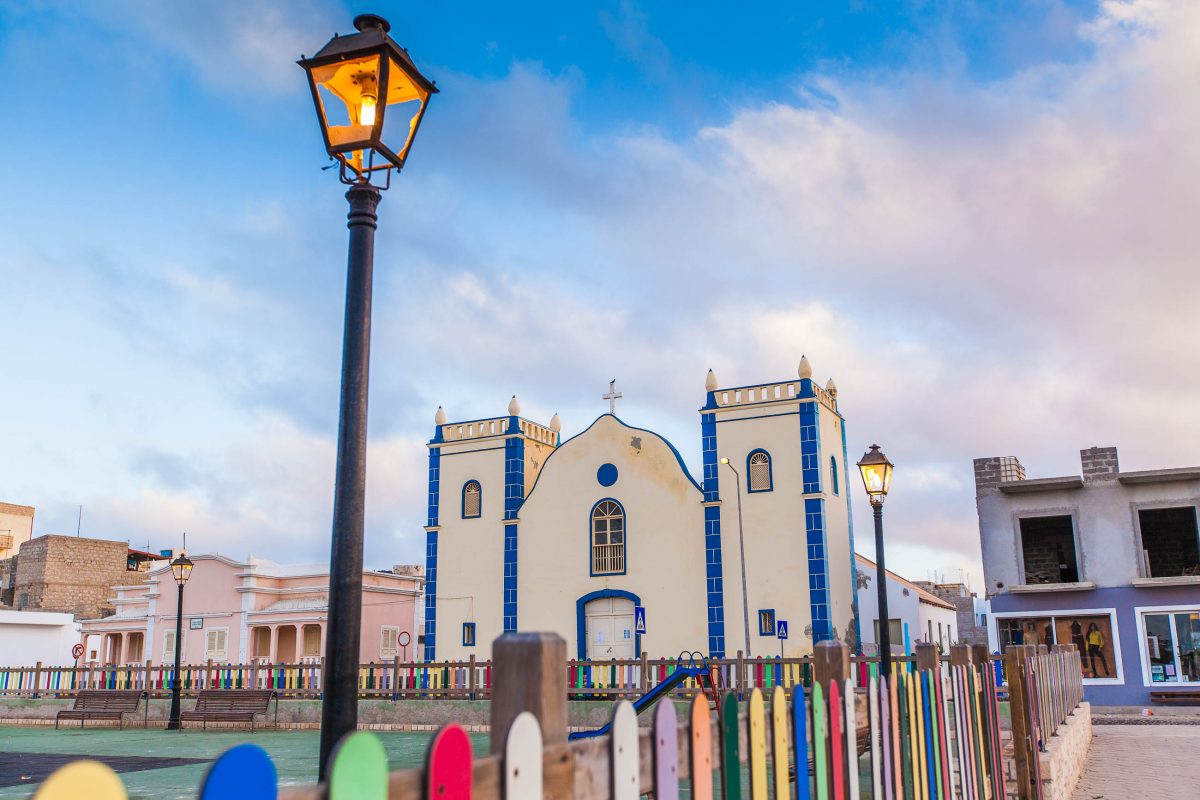
Sal Rei, die ruhige Hauptstadt von Boa Vista auf den Kap Verden bietet ein schmuckes Stadtzentrum mit der wichtigsten touristischen Infrastruktur der Insel. Ihre feinsandigen Strände eignen sich zum Baden, Tauchen und Surfen.
Sal Rei liegt im Nordwesten der Insel. Für eine Hauptstadt, in der mit über 2.000 Einwohnern fast die Hälfte der gesamten Inselbevölkerung lebt, wirkt Sal Rei fast verschlafen. Das geruhsame und doch interessante Städtchen zählt zu unseren Top 10 Sehenswürdigkeiten der Kap Verden.
BILDER: Hauptstadt Sal Rei auf Boa Vista
Fotogalerie: Boa Vista – Hauptstadt Sal Rei
Zentrum von Sal Rei
Zentrum von Sal Rei ist der belebte Praça de Santa Isabel. Hier werden vor einem malerischen Ambiente aus Blumen und Pavillons Batik-Stoffe, Schnitzereien, Obst und Gemüse verkauft.
Eines der schönsten Gebäude am Praça de Santa Isabel ist die gleichnamige Kirche „Igreja da Santa Isabel“, ein schmuckes, zartgelbes Kolonialstil-Gebäude mit zwei wuchtigen Türmen. Für Touristen eine gute Anlaufstelle, denn hier sind nicht nur das Reisebüro, sondern auch eine Bank und das Postamt zu finden.
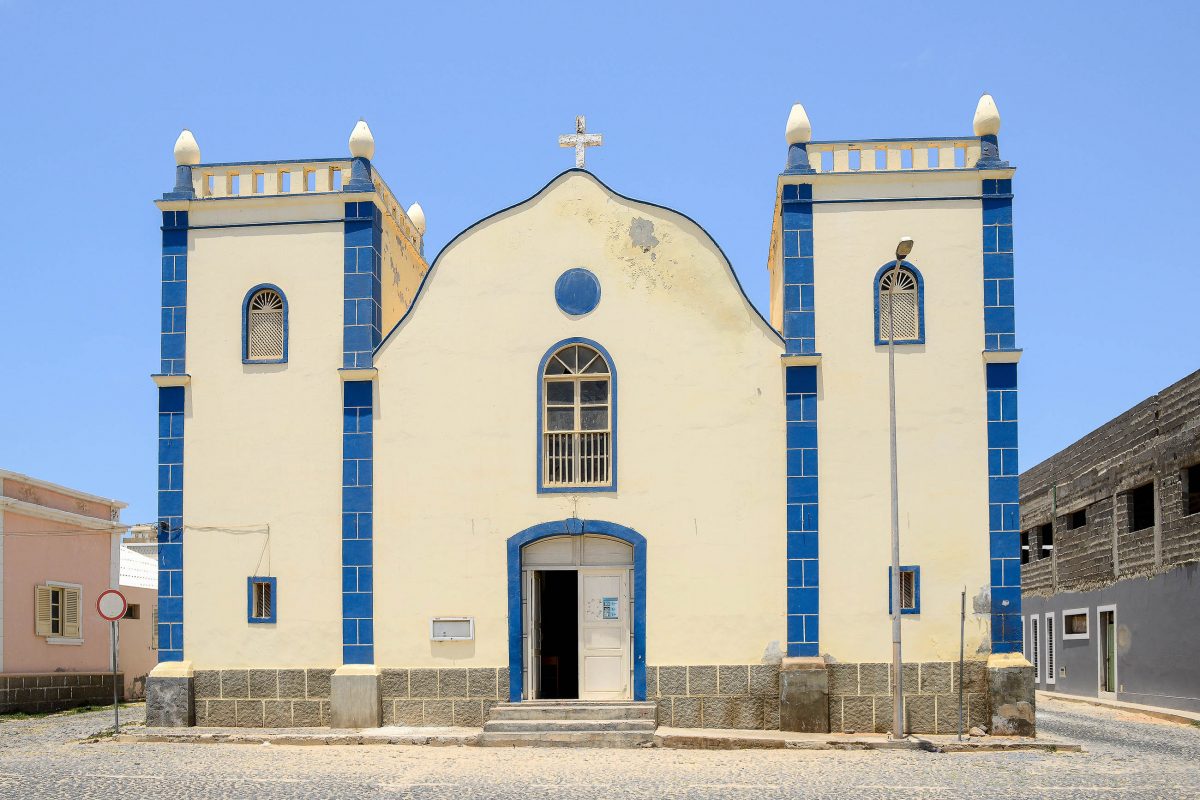
Spaziert man entlang der Uferpromenade in Sal Rei erreicht man den alten Hafen und eine Bootswerft. Die Zeichen von Abwanderung, Hunger und Krise sind zum Großteil nicht mehr zu sehen, die meisten pastellfarbenen Häuser entlang der Avenida dos Pescadores sind renoviert.
Sal Rei hat das Zeug, ein mediterranes Tourismusstädtchen zu werden. Noch geht es ruhig zu in den Straßen – Kinder spielen in den Gassen und Fischer legen ihre Netze aus.
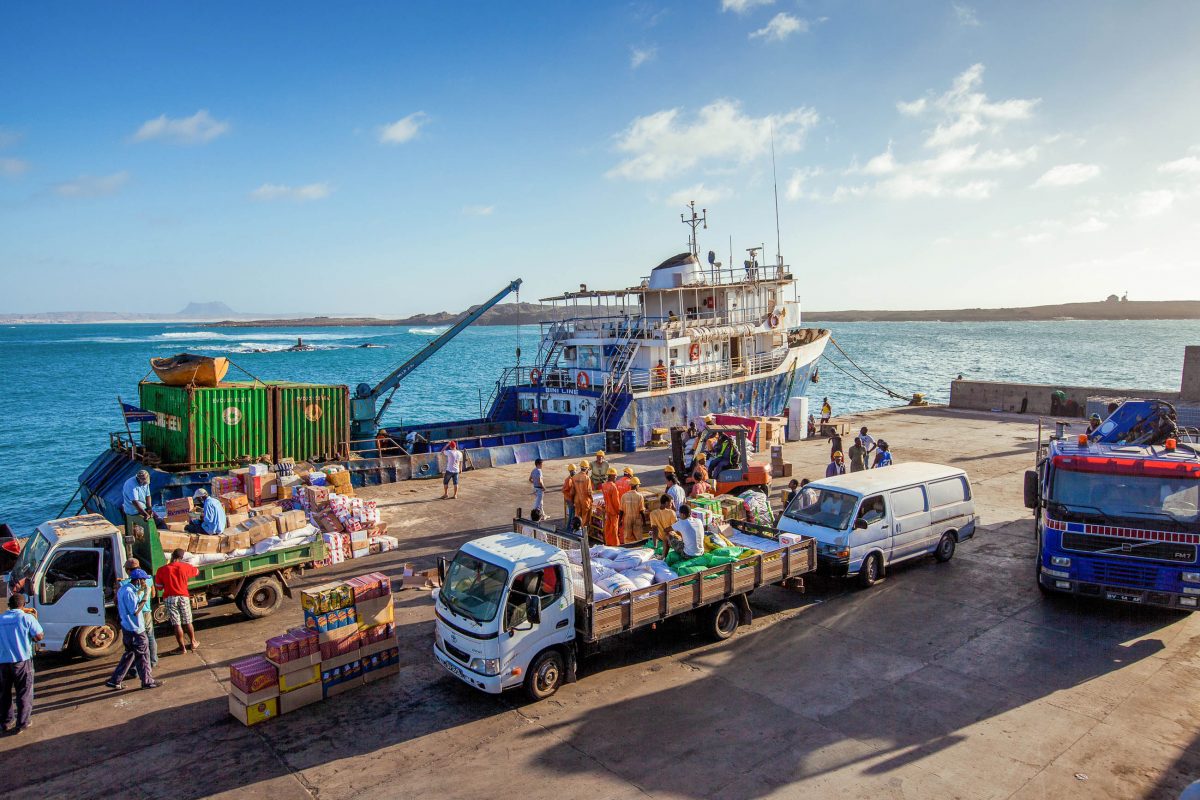
Vom Ufer aus fällt der Blick immer auf die kleine Ilheu de Sal Rei vor dem Ufer von Boa Vista, die Sal Rei vor der Wildheit des Atlantiks schützt und dafür sorgt, dass man in seinen Buchten hervorragend baden und schwimmen kann.
Salinen von Sal Rei
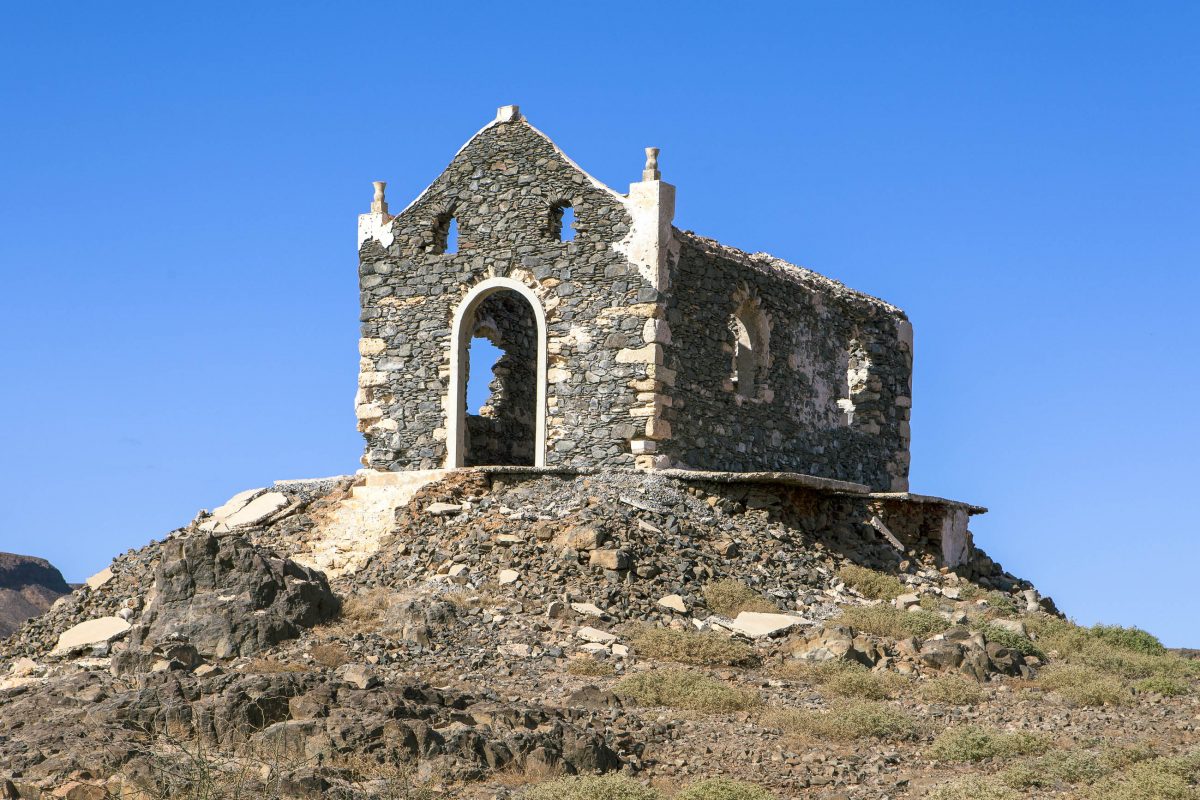
Im Nordosten von Sal Rei liegen die Salinen, die der Stadt „königliches Salz“ einst ihren Namen gaben. Noch etwas weiter lässt sich oberhalb der Felsküste die Ruine der Kapelle Nossa Senhora de Fátima entdecken.
Wanderung zum Wrack der Cabo Santa Maria

Die Wanderung zum Wrack der Cabo Santa Maria dauert von Sal Rei aus etwa 6 Stunden. Der Weg führt durch teilweise unwegsames, steiles und steiniges Gelände und setzt gute Kondition, festes Schuhwerk, eine Wanderkarte und einen ausreichenden Vorrat an Trinkwasser voraus.
Der Weg führt von Riba d’Olt, einem Ortsteil im Norden von Sal Rei über ein Straße Richtung Norden bis zum Pico Vígia, von wo aus man eine fantastische Aussicht auf die tosende Brandung in der Tiefe hat.
Rotschnabeltropikvögel geben im Aufwind ihre Flugkünste zum Besten und Wüstenraben beschweren sich lautstark über die unerwünschte Störung. Hier taucht bereits im Osten in der Ferne das Wrack der „Cabo Santa Maria“ am Praia do Sobrado auf.
Der spanische Frachter strandete hier im März 1968 aufgrund eines Navigationsfehlers und hatte Autos, Getränke, Melonen, Käse und Kork geladen. Das rostige Gerippe des Frachters ist mittlerweile in zwei Teile gebrochen und ragt gespenstisch aus dem Sand.
Tipp: In der Nähe des Wracks ereigneten sich bereits mehrmals Überfälle auf Touristen, die alleine oder zu zweit unterwegs waren. Generell sollten in einsame Gegenden auf Boa Vista möglichst keine (deutlich sichtbaren) Wertgegenstände mitgenommen werden.
Strände auf Boa Vista
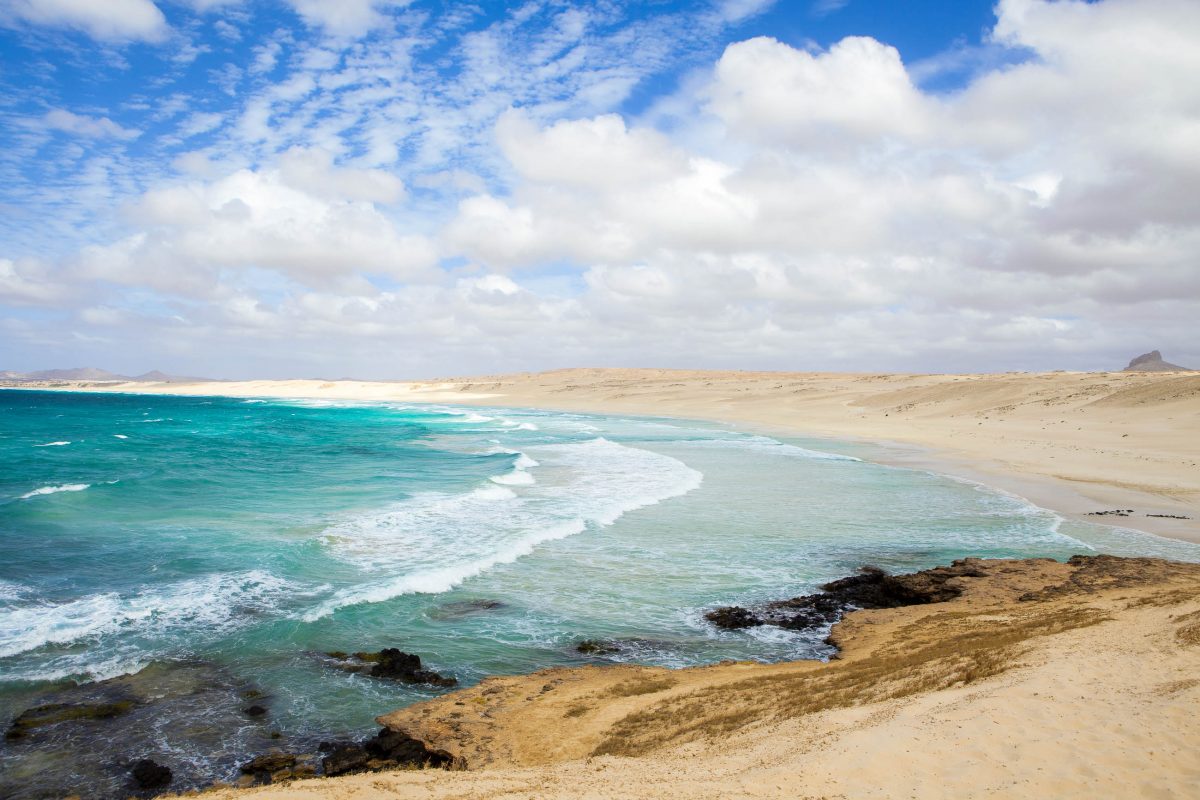
Nahezu die gesamte Insel Boa Vista auf Kap Verde ist von weitläufigen, feinsandigen und zum Großteil völlig menschenleeren Stränden umschlossen. Neben endlosen Strandspaziergängen eignen sich Boa Vistas Küsten auch zum Schwimmen, Tauchen und Surfen.
Boa Vista bietet wie jede Insel viel Strand, 55km um genau zu sein. Die Strände auf Boa Vista sind die größten und schönsten der Kap Verden und zählen zu unseren Top 10 Sehenswürdigkeiten der Kap Verden. Sonne, Meer und Wellen schaffen exzellente Bedingungen für Badegäste und Wassersportler.
BILDER: Strände auf Boa Vista, Kap Verde
Fotogalerie: Boa Vista – Strände
Strände im Westen von Boa Vista
Gleich in der Nähe der Hauptstadt Sal Rei liegt im Norden der Praia de Cabral und im Süden der Praia do Estoril. Diese sind durch die vorgelagerte Insel Ilhéu de Sal Rei geschützt und ihre Buchten eignen sich hervorragend zum Baden.
Der Praia do Estoril geht im Süden direkt in den Praia de Carlota über, wo es Strandrestaurants, sowie Surf- und Tauchstationen gibt. Hier branden vor allem zwischen November und April masthohe Wellen an den Strand, in die sich nur Profisurfer wagen sollten. Anschließend folgt der Praia da Chave, an dem große Hotels für so etwas wie Massentourismus sorgen.
Strände im Süden von Boa Vista
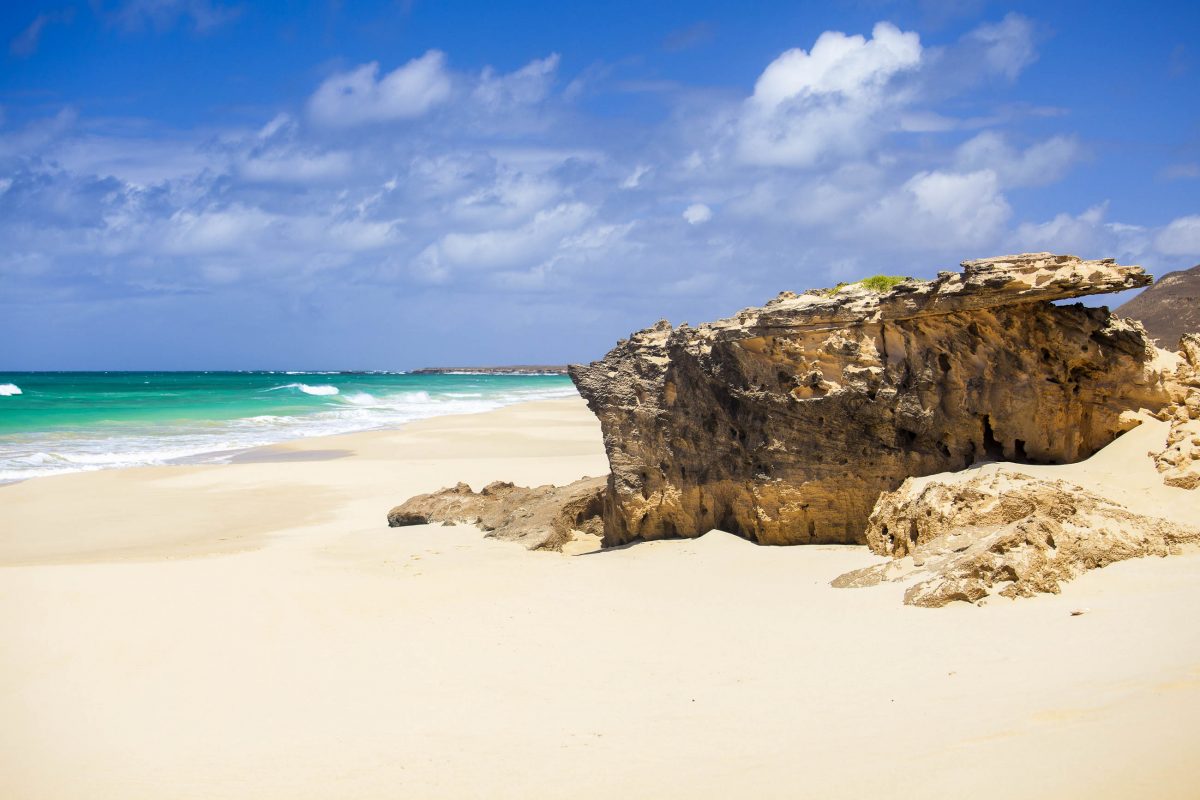
Nach dem Praia da Chave folgen der Praia da Varandinha mit Leuchtturm, Kalkfelsen und -höhlen und der endlose Praia Santa Monica. Mit malerischen Felsen und feinem, hellem Sand gelten die beiden als schönste Strände auf Boa Vista.
An der Südküste entlang Richtung Osten erreicht man bald den Praia do Curral Velho in der Nähe des gleichnamigen Dorfes. Hier schützen Dattelpalmen vor der Sonne, deren Schatten sich die Besucher des Öfteren auch mit Ziegen teilen müssen. Auf der Insel vor der Küste sind hunderte Brauntölpel und die selten gewordenen schwarzen Fregattvögel mit einer Flügelspannweite von über 2 Metern zu beobachten.
Und apropos Naturbeobachtung: Am nächsten Strand, dem Praia de João Barrosa legen in den Sommernächten bis zu 2.000 Meeresschildkröten ihre Eier ab.
Strände im Norden von Boa Vista

Die Strände im Nordosten der Insel, der Praia as Gatas („Katzenhaistrand“) und der Praia do Galeão, eignen sich weniger zum Schwimmen, sind jedoch für ausgedehnte Strandspaziergänge ideal. Hier kann man Fischer bei der Arbeit beobachten und hin und wieder kommen sogar Delfine bis an den Strand.
Tipp: Mit der rasanten Entwicklung im Tourismus stieg leider auch die Anzahl der Überfälle an den Stränden. Ausgedehnte Strandspaziergänge daher sicherheitshalber nie allein unternehmen.
Ortschaften auf Boa Vista
Wer die traumhaften Strände von Boa Vista erkunden möchte, sollte auch dem einen oder anderen Örtchen auf Boa Vista einen Besuch abstatten. Abgesehen von ein paar Häusern und bunten Kirchlein findet ihr hier hauptsächlich Ruhe und Frieden in einer Umgebung, in der die Zeit stehen geblieben zu sein scheint.
Rabil
Die heute eher verschlafene Ortschaft Rabil liegt südlich der Hauptstadt Sal Rei und war einst Hauptort von Boa Vista. Das Dorf bietet eine wunderschöne Aussicht auf die fruchtbaren Oasen am Grund der Ribeira do Rabil.
Rabils Hauptattraktionen bestehen in der stämmigen Kirche São Roque, der ältesten Kirche der Insel aus dem Jahr 1801 und in einer Töpferschule am südlichen Ortseingang. Hier wurden früher Dachziegel gepresst, heute werden kapverdische Vasen, Amphoren, Wasserkrüge und traditionelle Töpfe hergestellt.
Tipp: Falls die Töpferwerkstatt geschlossen ist, macht auf euch aufmerksam, die Nachbarn informieren die Mitarbeiter der Töpferei, die nach wenigen Minuten aufmachen.
Povoação Velha
Von Rabil eine halbe Stunde weiter nach Süden erreicht man Povoação Velha („alte Siedlung“). Sie war, wie ihr Name schon sagt, die erste freie Siedlung von Boa Vista zu Beginn des Salzhandels. Von den Stränden aus ist Povoação Velha nicht zu sehen, war somit hervorragend vor Piraten geschützt und bietet heut am Aussichtspunkt Rocha Estânçia einen traumhaften Blick bis zu den Nachbarinseln Maio und São Nicolau.
Ansonsten gibt es in Povoação Velha kleine Häuschen um den zentralen Platz Praçeta de Santo António, die kleine, bunt geschmückte Kirche Igreja Nossa Senhora da Conceição aus dem Jahr 1828, eine kleine Bar und ein paar Läden – sonst nichts.
Aus diesem Grund sind die meisten Besucher auch bald wieder weg und wenden sich weiter Richtung Küste zu den herrlichen Stränden
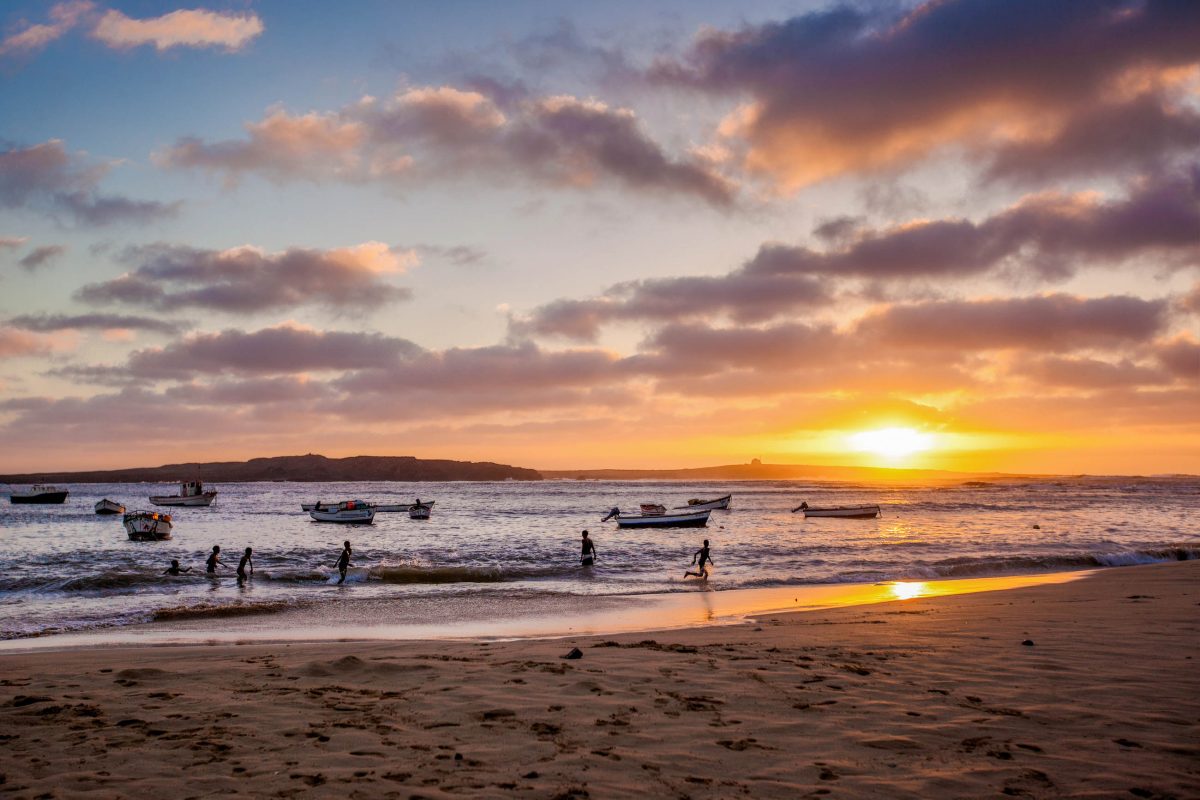
Curral Velho
Curral Velho („altes Weidegatter“) liegt ganz im Süden von Boa Vista und hat außer seiner traumhaften Umgebung und dem Praia de Curral Velho nicht viel zu bieten. Auf dem Weg dorthin durchfährt man die idyllische Oase Fonta Vicente, in der Gemüse und Mandelbäume angebaut werden.
Entlang der Südküste von Boa Vista nach Osten erstreckt sich der Praia de João Barrosa, der in den Sommernächten von bis zu 2.000 Meeresschildkröten für die Eiablage genutzt wird. Einige der Arten sind bereits vom Aussterben bedroht und so hat sich die Organisation „Turtle Foundation“ zum Ziel gesetzt, sowohl die erwachsenen Schildkröten als auch ihre Gelege vor den menschlichen Räubern zu schützen – mit erstem Erfolg.
Norte
Der Osten der Insel ist sehr einsam und verlassen, oft trifft man über weite Strecken keine Menschenseele. Norte in der Nordostecke von Boa Vista besteht eigentlich aus den drei Ortschaften João Galego, Fundo das Figueiras und Cabeço dos Tarafes. Deren Bewohner sind vergleichsweise wohlhabend und mit Telefon, Strom und Schulen versorgt.
Von Fundo das Figueiras zweigt eine Straße an die Nordküste ab, zum Praia das Gatas („Katzenhai-Strand“). Hier schützt ein Riff die Küste der Insel, Fischer breiten ihren Fang zum Trocknen und Delfine kommen fast bis an den Strand.
Südwestlich von Cabeço dos Tarafes liegt das Oi d’Àgua („Blaues Auge“), der einzige Süßwassersee der Insel – inmitten einer atemberaubenden Gebirgswüste.
Bofareira
Bofareira liegt im Norden der Insel etwa auf halber Strecke zwischen Sal Rei und Norte. Eingebettet in eine sanfte Dünenlandschaft kann man auf dem Weg zum Strand oder auf der verlassenen Trasse in Richtung Sal Rei ohne Orientierungsprobleme ein Stückchen Wüste kennenlernen.

